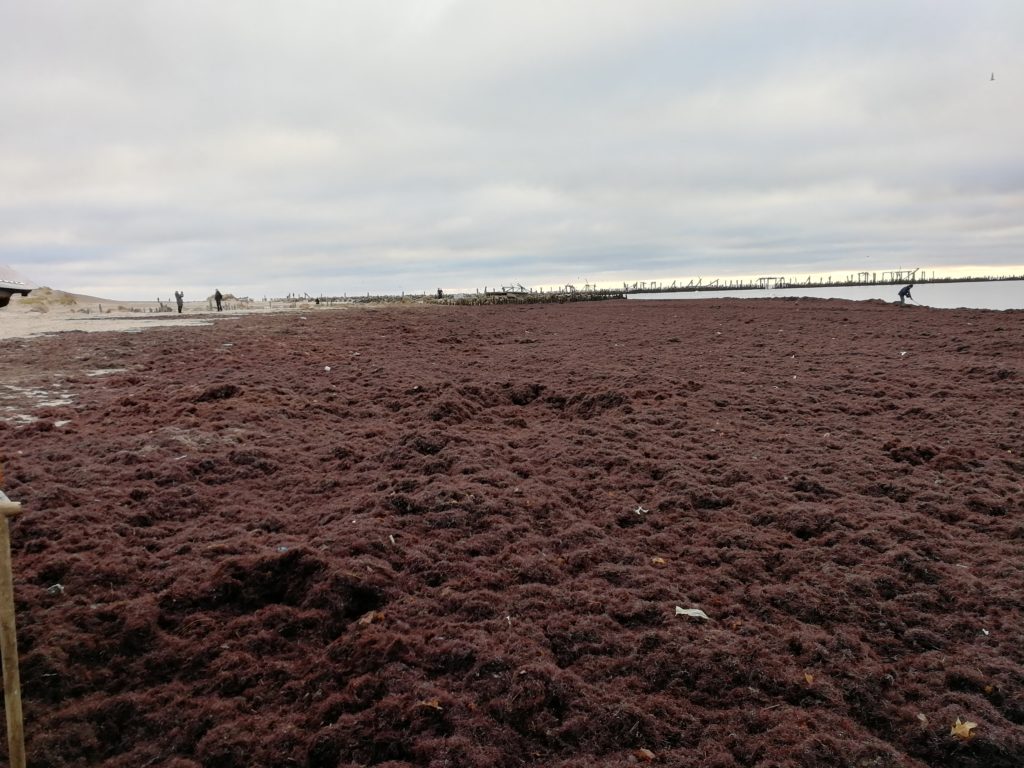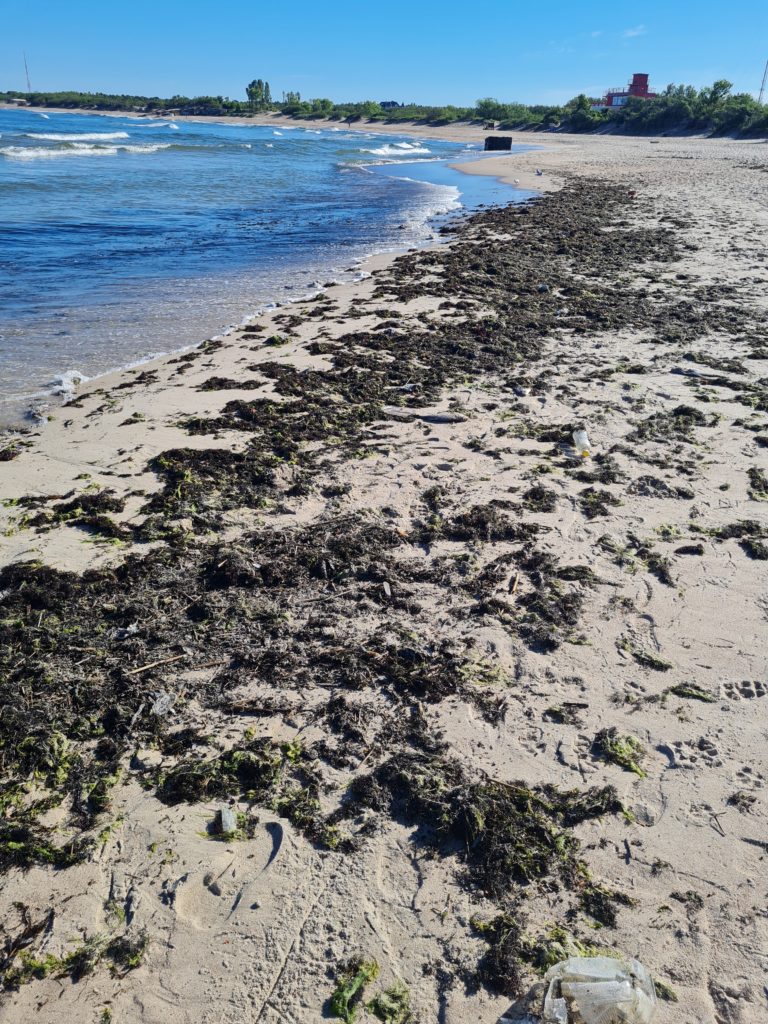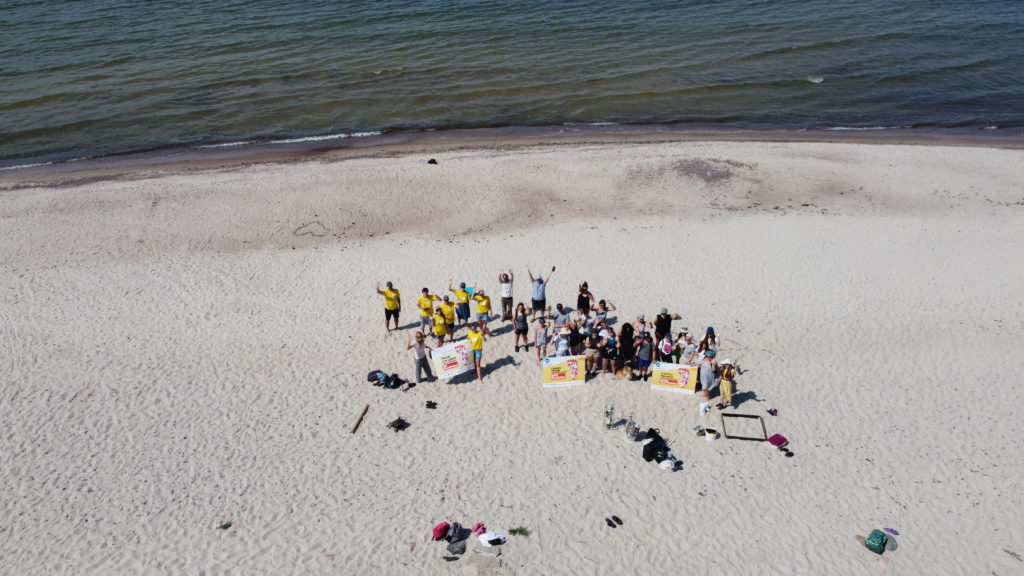Algae revealed what really lies in the Baltic Sea
This summer, a team of researchers from Klaipėda University – participants of the project Assessment, Monitoring, and Reduction of Plastic Pollution in the Latvian-Lithuanian Seaside Using Innovative Measures and Awareness Raising (ESMIC) – studied the beaches of Klaipėda, Klaipėda District, and Palanga Municipalities. Although the project focuses on plastic, which is attracted by sediments of organic origin as if it were a magnet, scientists also have more algae-related observations. The ESMIC team, including dr. A. Balčiūnas, dr. D.Vaičiūtė, dr. M. Kataržytė, and dr. G. Gyraitė, found that the sediments had stayed on the beaches of Šventoji and Melnragė for a very long time: the scientists called them “hotspots”.
The algae started to rot and made the rest uncomfortable: people avoided wading into turbid water, and the deterrent smell was annoying. When the researchers examined the amount of oxygen in the said deposits, the results were alarming: the parameter had reached a critical level, termed anoxia.
Dr. Diana Vaičiūtė, chief researcher of the Marine Research Institute, KU, concluded that an oxygen-free environment meant very intense bacterial activity. Bathing in water with, or nearby, abundant deposits of that kind was unequivocally unsafe and could pose a threat of various health disorders.

Photo credits – Diana Vaiciute
If algae remain on the beaches for several days or even weeks in the summer, municipalities and beach managers should definitely take measures to prevent possible diseases.
The comment that the removal of algae on the Blue Flag beaches is not possible at all, that nature itself has to “fix” the problem, is supported by scientists, emphasising the need to assess the specific situation and the danger it poses. From April to mid-September, the scientists used drones in Melnragė, Karklė, Palanga, and Šventoji for about 80 times and will continue this work until the end of autumn.
On the Lithuanian coast, in a 100-meter section, an average of 146 units of various types of litter were detected. The type depended on both the season and global factors.
The scientists saw a trace of the pandemic in the sand, i.e. facemasks. However, in the summer, most of the litter visible on the beaches was related to recreation: cups and other containers for drinks and snack packs. “We have noticed that the restriction on the use of plastic this summer is already reflected in the litter we find: instead of plastic cups and straws, we often have to see analogues of such products made of paper or other more eco-friendly materials,”- explained Dr. Arūnas Balčiūnas, researcher of the Marine Research Institute of KU.
“In the autumn and spring, when strong winds erode and lift algae from the depths of the sea, scientists are more likely to find in them remnants of nets and other fishing gear or plastic fragments from the bottom. “We clearly see a trend: where there are algae, the amount of plastic is much higher. Our hypothesis that they act as a kind of trap for debris in the water has been confirmed. The algae observed on the coast in spring and autumn provide a particularly good opportunity to remove larger amounts of plastic from the marine environment by removing these organic sediments. Therefore, if the biggest emphasis in the summer is on the public health aspect, the cold season is the time when we should do our “homework” for the benefit of the whole ecosystem, “said Dr. A. Balčiūnas.
According to the scientists, it is difficult to assess the situation on the beaches more objectively and to react more quickly to the municipalities, the National Public Health Laboratory and other institutions due to limited human and financial resources.

“One of the goals of our project is to offer an alternative monitoring methodology that would effectively serve those who care about clean beaches and public health,” emphasises the ESMIC team, which actively uses innovative technologies in their work. In June, together with Klaipėda Science and Technology Park, an interactive campaign was initiated on seven popular beaches: people were invited to scan a special QR code and fill out a questionnaire on the status of beaches and water, the noticeable litter, algae as well as possible ailments. The QR code was scanned almost 400 times during the summer. “We believe that this is a good start for involving general public in the work of scientists, promoting people’s attention and awareness. We are grateful to all the participants of the campaign who thus became amateur scientists. We hope to apply this format next summer as well,” said dr. Greta Gyraitė
To address the challenge of plastic pollution, the researchers strongly emphasise the importance of dialogue with the local government, business community, and general public. It is during this insight that emerges, along with scientific data, can become a valuable starting point for finding new effective ways to remove plastic from our environment.

Photo credits – Jonas Gintauskas


